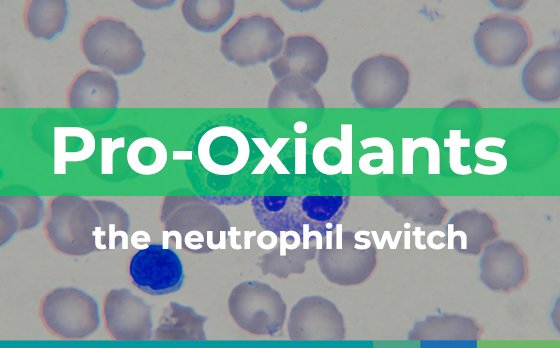Immunotherapy is revolutionizing cancer treatment by leveraging the body’s immune system to target tumors in a more precise and less invasive way. One of the most promising advances in this field is the use of neutrophils, a type of white blood cell essential for the body’s defense, to eliminate cancer cells. However, their dual nature—capable of either combating or supporting cancer—presents an intriguing challenge for researchers.
Neutrophils are the most abundant immune cells in the human body. Under normal conditions, they act as first responders, destroying bacteria and other invaders. But in cancer, these white blood cells can play two opposite roles:
N1 Neutrophils (anti-tumor): They stimulate beneficial inflammation, directly attack tumor cells by releasing toxic substances, and promote the activation of other immune cells to fight cancer.
N2 Neutrophils (pro-tumor): They create an environment conducive to tumor growth by suppressing the immune response, encouraging the formation of blood vessels (angiogenesis), and helping the tumor evade the immune system.
The problem is that, as tumors progress, they tend to recruit more N2 neutrophils, facilitating their growth and resistance to treatment.
Recent research has shown that it is possible to “reprogram” N2 neutrophils to adopt an anti-tumor N1 phenotype. This is achieved through the use of pro-oxidants, substances that increase the production of reactive oxygen species (ROS). These molecules are highly toxic to tumor cells and simultaneously attract and activate N1 neutrophils at the tumor site. Pro-oxidants are chemical or natural agents that generate an oxidative environment in tumor tissue. This oxidative stress has two main effects:
Direct damage to the tumor: ROS attack the membranes, DNA, and proteins of cancer cells, leading to their death. Attraction of N1 neutrophils: ROS act as chemical signals that attract N1 neutrophils to the tumor. Once there, these neutrophils amplify ROS production and strengthen the immune response. A promising example is the use of hydrogen peroxide (H2O2) administered directly into the tumor. Preclinical studies and clinical trials have shown that this strategy can significantly reduce tumor size and even eliminate it in some cases.
The success of this strategy largely depends on the tumor microenvironment, which is the surrounding environment of cancer cells. This microenvironment can become hypoxic (low in oxygen) and acidic, favoring the accumulation of N2 neutrophils. However, introducing pro-oxidants into the tumor can counteract this effect, promoting a more inflammatory and hostile environment for the cancer.
Figure 1. The image illustrates the dual role of neutrophils in cancer, highlighting their distinct subtypes: N2 (pro-tumor) and N1 (anti-tumor). On the left, N2 neutrophils promote tumor progression by evading the immune system and stimulating the formation of new blood vessels (angiogenesis). On the right, N1 neutrophils exhibit anti-tumor properties, enhanced through the administration of hydrogen peroxide, which generates reactive oxygen species (ROS). These ROS directly damage tumor cells and create a hostile microenvironment, attracting and activating N1 neutrophils to reinforce the anti-cancer response.
Evidence from Studies and Clinical Trials
Animal studies: In research with mice, the injection of agents such as hydrogen peroxide or products derived from tea tree oil showed a potent anti-tumor response. Treated tumors exhibited significant infiltration of N1 neutrophils, leading to tumor shrinkage and, in some cases, complete elimination.
Human clinical trials: In patients with advanced breast cancer, the combination of pro-oxidants and radiotherapy has achieved impressive response rates. For example, a treatment known as KORTUC II, which combines stabilized hydrogen peroxide with radiotherapy, has reported tumor reductions of up to 97% in some patients.
Localized action: Pro-oxidants are administered directly into the tumor, minimizing systemic side effects.
Synergy with other treatments: Pro-oxidants can enhance the effects of therapies such as radiotherapy and certain immunotherapy drugs.
Potential to treat metastases: Although still under study, researchers believe this approach could trigger a systemic immune response, attacking tumors in other parts of the body.
While the results are promising, the use of pro-oxidants also poses risks, such as the potential for side effects related to excessive immune activation. Moreover, further studies are needed to better understand how to optimize this approach and determine its effectiveness in different types of cancer. The use of pro-oxidants to reprogram neutrophils represents a new frontier in the fight against cancer. This approach combines the natural power of the immune system with technological advancements to attack tumors more precisely and effectively. Although there is still much to learn, this strategy has the potential to transform cancer treatment, offering hope to millions of patients worldwide.
Main Reference:
Ralph, S. J., & Reynolds, M. J. (2023). Intratumoral pro-oxidants promote cancer immunotherapy by recruiting and reprogramming neutrophils to eliminate tumors. Cancer immunology, immunotherapy : CII, 72(3), 527–542. https://doi.org/10.1007/s00262-022-03248-8
Other References:
Galdiero, M. R., Marone, G., & Mantovani, A. (2018). Cancer Inflammation and Cytokines. Cold Spring Harbor perspectives in biology, 10(8), a028662. https://doi.org/10.1101/cshperspect.a028662
Hedrick, C. C., & Malanchi, I. (2022). Neutrophils in cancer: heterogeneous and multifaceted. Nature reviews. Immunology, 22(3), 173–187. https://doi.org/10.1038/s41577-021-00571-6


